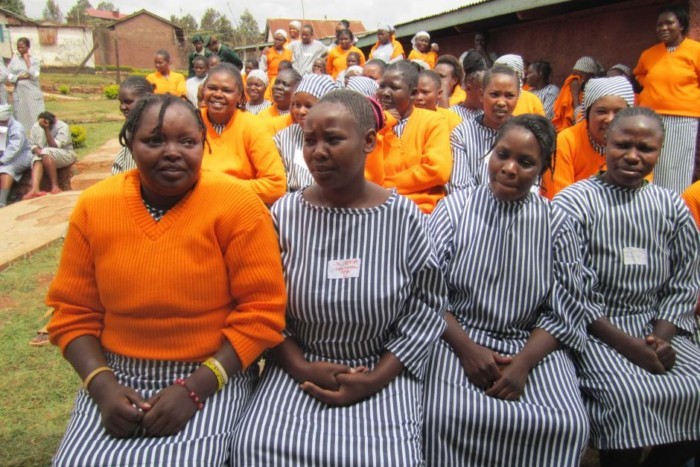

“To touch is also always to be touched,” she writes. In this context, Harvey cites the French philosopher Maurice Merleau-Ponty, who described all touch as an exchange. To touch an object is to know that we are separate from that object, but in touching another person, we are able to “form and express bonds” with one another. Through touch we understand that we are alive. Scholar Elizabeth Harvey paraphrases Aristotle, who described the flesh as the “medium of the tangible,” establishing one’s “sentient border with the world.” Touch is unique among the senses in that it is “dispersed throughout the body” and allows us to experience many sensations at once. Their desire for intimacy, privacy and, most basic of all, touch, reveals the profound lack of human contact in prison, including but also greater than sex itself.

Prisoners embraced conjugal visits, and sometimes, the political reasonings behind them, but the writings of the men at Somers suggest a greater longing. This history set a precedent for conjugal visits as a policy of social control, shaped by prevailing ideas about race, sexual orientation, and gender. The policy was mostly limited to Black prisoners because white administrators believed that Black men had stronger sexual urges then white men, and could be made more pliable when those urges were satisfied. The men built structures for these visits out of scrap lumber painted red, and the term “ red houses” remained in use long after the original structures were gone.

The visits were unofficial, and stories from the decades that followed are varied, ranging from trysts between married couples to tales of sex workers, bussed in on weekends. Parchman, then a lucrative penal plantation, sought to incentivize Black prisoners, who picked and hoed cotton under the surveillance of armed white guards, by allowing them to bring women into their camp. The men at Somers wrote of conjugal visits as something new, but in fact, Parchman had adopted some version of the practice as early as 1918. “Perhaps we’re whistling in the wind,” they wrote, “but if the truth hits home to only a few, we’ll be satisfied.” But the urgency of the mens’ plea, as chronicled in The Bridge and the Somers Weekly Scene, gives voice to the depth of their deprivation. Conjugal visits, the editors of The Bridge wrote, are “a controversial issue, now quite in the spotlight,” thanks to their implementation at Parchman Farm in Mississippi in 1965. This observation marked the beginning of a long campaign-far longer, perhaps, than the men at Somers could have anticipated-for conjugal visits in the state of Connecticut, a policy that would grant many incarcerated men the privilege of having sex with their wives. “The words ‘conjugal visit’ seem to have a dirty ring to them for a lot of people,” a man named John Stefanisko wrote for The Bridge, a quarterly at the Connecticut Correctional Institution at Somers, in December 1963.


 0 kommentar(er)
0 kommentar(er)
